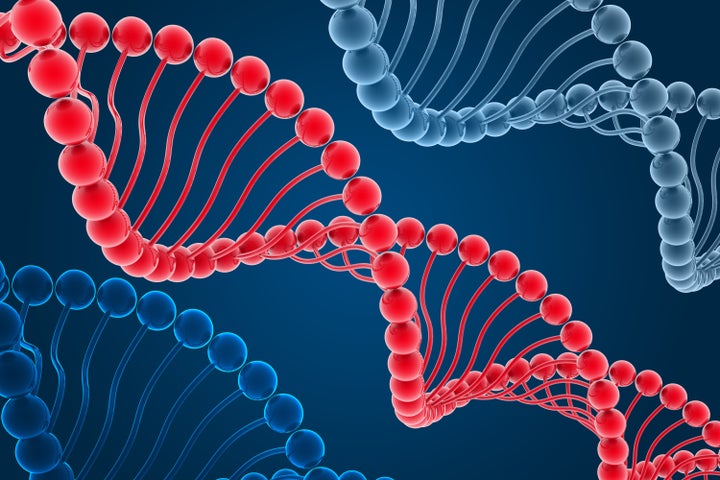
Click here to read an original op-ed from the TED speaker who inspired this post and watch the TEDTalk below.
Alexander Tsiaras' video, "Conception to Birth -- Visualized," is both exciting and humbling. It is stunning to see the magnificent embryonic development of the human body, from sperm and egg to birth, all the more because his visualizations are not simple medical illustrations, but algorithmically processed data sets from high resolution micro MRI images of the fetus. It is humbling because Tsiaras' video is a reminder about how little we actually know about the molecular self-assembly processes that create us. Understanding this cellular dance is, as Tsiaras notes, beyond current mathematical comprehension, and can only be appreciated through the lenses of mystery, magic, and even divinity.
Scientists have been working to collect knowledge of biological systems for centuries. What Tsiaras does with micro MRI is give us yet another tool for observing, non-destructively, the development program at work from the earliest stages. It reminded me of the Hubble telescope and how it changed our view of the universe. Only here, rather than looking outward to the stars, we peer deeper into our own bodies than ever before. The results are no less mind-blowing.
Is self-assembly of the human body proof that God exists? Does the existence of the universe? For me, these questions are red herrings. Cell biology is a playground, a never-ending garden of delights. One could say that life itself is my religion. The astronauts I've met feel similarly about space. What is different about cell biology, though, is that we don't need to leave the Earth to explore it. That, and we've got access to the source code: DNA.
Cell biology is a playground, a never-ending garden of delights. One could say that life itself is my religion. -- Andrew Hessel
As awe-inspiring as it is, the reality is that the complexity of fetal development reduces to 3 gigabits of genetic code. We are hardware made from software, code that is elegantly written. For the E. coli bacterium, a different yet still complex organism, the code amounts to less than 5 megabits, a marvel in data compression. Change the code, change the organism. That's why, decades ago, I chose to narrow my biological interests to DNA and genetics. It's the ultimate sandbox for life as we know it.
More than anything else in biology, DNA is unambiguous to measure, conserved across all organisms, and relatively easy to manipulate. Through DNA, we can start to understand ourselves by comparing our genomes to other creatures. By changing the code, we can explore how in turn this affects metabolism, phenotype, and behavior. And this is exactly what life scientists are beginning to do in high throughput. DNA sequencing data is now flowing out of genome centers at a phenomenal rate, at the very least ensuring job stability for IT professionals and bioinformatics specialists. Meanwhile, synthetic biology, genetic engineering assisted by design software tools and automated synthesizers, is blistering hot. The field is opening up bioengineering to a new generation of programmers.
We still have so much to learn about the basics! Indeed, the very first cell simulator -- a computer model of a single cell -- was made just last year by some Stanford researchers. (See http://wholecell.stanford.edu/). The simulator was for Mycoplasma genitalium, a bacterium whose genome was fully sequenced 17 years earlier, in 1995, and whose evolutionary distance is a few billion years from our own cells. This helps to explain why it's taken over a decade from sequencing the human genome to begin seeing dividends from this data. This said, this simulator should improve quickly, and every advance will help us better understand the workings of our own (related) biology. Combined with new information about the bacteria and viruses we share our bodies with, I believe we're entering a golden age of cell physiology.
Going back to Tsiaras' work, when will we fully understand the metabolic processes that produce a newborn child? In the end, we probably won't have to.
Already, we're eliminating the need for internally-directed self assembly by using bioprinters (essentially machines like the Makerbot replicator that print living cells rather than plastic) to directly print the final form of tissues and organs -- and perhaps one day organisms. Here, assembly is controlled externally by computer software so that biological self-assembly (and the DNA code required for it) is unnecessary. Combined with metabolic engineering and stem cell technologies, this should give developers a powerful suite of design tools for making a wide range of biomaterials (think replacement organs and much more), including hybrid systems that are part biological, part made of conventional materials -- useful for things like biochip-based sensors.
Overall, the rapid advancement of DNA technologies, software design tools and bioprinting could help people to follow in the footsteps of our own manufacture to make the machines we need to survive and thrive out of living materials.
Autodesk Distinguished Researcher Andrew Hessel is a microbiologist and geneticist exploring the future of computer-assisted biological engineering and design.
Ideas are not set in stone. When exposed to thoughtful people, they morph and adapt into their most potent form. TEDWeekends will highlight some of today's most intriguing ideas and allow them to develop in real time through your voice! Tweet #TEDWeekends to share your perspective or email tedweekends@huffingtonpost.com to learn about future weekend's ideas to contribute as a writer.